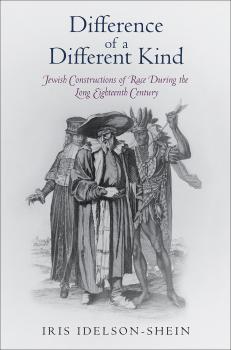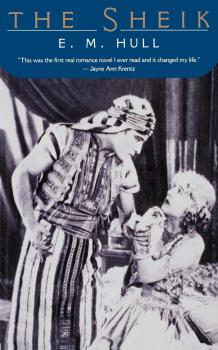ТОП просматриваемых книг сайта:
ЛИТМИР - LITMIR.BIZ - Электронная библиотека
Скачивание или чтение онлайн электронных книг.Аннотация
Greece has shouldered a heavy burden in the global economic crisis, struggling with political and financial insecurity. Greece has also the most porous external border of the European Union, tasked with ensuring that the EU's boundaries are both «secure and humanitarian» and hosting enormous numbers of migrants and asylum seekers who arrive by land and sea. The recent leadership and fiscal crises have led to a breakdown of legal entitlements for both Greek citizens and those seeking refuge within the country's borders. On the Doorstep of Europe is an ethnographic study of the asylum system in Greece, tracing the ways asylum seekers, bureaucrats, and service providers attempt to navigate the dilemmas of governance, ethics, knowledge, and sociability that emerge through this legal process. Centering on the work of an asylum advocacy NGO in Athens, Heath Cabot explores how workers and clients grapple with predicaments endemic to Europeanization and rights-based protection. Drawing inspiration from classical Greek tragedy to highlight both the transformative potential and the violence of law, Cabot charts the structural violence effected through European governance, rights frameworks, and humanitarian intervention while also exploring how Athenian society is being remade from the inside out. She shows how, in contemporary Greece, relationships between insiders and outsiders are radically reconfigured through legal, political, and economic crises. In addition to providing a textured, on-the-ground account of the fraught context of asylum and immigration in Europe's borderlands, On the Doorstep of Europe highlights the unpredictable and transformative ways in which those in host nations navigate legal and political violence, even in contexts of inexorable duress and inequality.
Аннотация
In many accounts of Native American history, treaties are synonymous with tragedy. From the beginnings of settlement, Europeans made and broke treaties, often exploiting Native American lack of alphabetic literacy to manipulate political negotiation. But while colonial dealings had devastating results for Native people, treaty making and breaking involved struggles more complex than any simple contest between invaders and victims. The early colonists were often compelled to negotiate on Indian terms, and treaties took a bewildering array of shapes ranging from rituals to gestures to pictographs. At the same time, Jeffrey Glover demonstrates, treaties were international events, scrutinized by faraway European audiences and framed against a background of English, Spanish, French, and Dutch imperial rivalries. To establish the meaning of their agreements, colonists and Natives adapted and invented many new kinds of political representation, combining rituals from tribal, national, and religious traditions. Drawing on an archive that includes written documents, printed books, orations, landscape markings, wampum beads, tally sticks, and other technologies of political accounting, Glover examines the powerful influence of treaty making along the vibrant and multicultural Atlantic coast of the seventeenth century.
Аннотация
European Jews, argues Iris Idelson-Shein, occupied a particular place in the development of modern racial discourse during the late seventeenth and early eighteenth centuries. Simultaneously inhabitants and outsiders in Europe, considered both foreign and familiar, Jews adopted a complex perspective on otherness and race. Often themselves the objects of anthropological scrutiny, they internalized, adapted, and revised the emerging discourse of racial difference to meet their own ends. Difference of a Different Kind explores Jewish perceptions and representations of otherness during the formative period in the history of racial thought. Drawing on a wide range of sources, including philosophical and scientific works, halakhic literature, and folktales, Idelson-Shein unfolds the myriad ways in which eighteenth-century Jews imagined the «exotic Other» and how the evolving discourse of racial difference played into the construction of their own identities. Difference of a Different Kind offers an invaluable view into the ways new religious, cultural, and racial identities were imagined and formed at the outset of modernity.
Аннотация
Diana Mayo is young, beautiful, wealthy—and independent. Bored by the eligible bachelors and endless parties of the English aristocracy, she arranges for a horseback trek through the Algerian desert. Two days into her adventure, Diana is kidnapped by the powerful Sheik Ahmed Ben Hassan, who forces her into submission. Diana tries desperately to resist but finds herself falling in love with this dark and handsome stranger. Only when a rival chieftain steals Diana away does the Sheik realize that what he feels for her is more than mere passion. He has been conquered—and risks everything to get her back. The power of love reaches across the desert sands, leading to the thrilling and unexpected conclusion. One of the most widely read novels of the 1920s, and forever fixed in the popular imagination in the film version starring the irresistible Rudolph Valentino, The Sheik is recognized as the immediate precursor to the modern romance novel. When first published there was nothing like it: To readers the story was scandalous, exotic, and all-consuming; to such critics as the New York Times the book was «shocking,» although written with «a high degree of literary skill.» In the author's native England, the bestselling book was labeled «poisonously salacious» by the Literary Review and banned from some communities. But the public kept reading. The influence of The Sheik on romance writers and readers continues to resonate. Despite controversy over its portrayal of sexual exploitation as a means to love, The Sheik remains a popular classic for its representation of the social order of its time, capturing contemporary attitudes toward colonialism as well as female power and independence that still strike a chord with readers today.
Аннотация
In Conscientious Objectors in Israel , Erica Weiss examines the lives of Israelis who have refused to perform military service for reasons of conscience. Based on long-term fieldwork, this ethnography chronicles the personal experiences of two generations of Jewish conscientious objectors as they grapple with the pressure of justifying their actions to the Israeli state and society—often suffering severe social and legal consequences, including imprisonment. While most scholarly work has considered the causes of animosity and violence in the Israeli-Palestinian conflict, Conscientious Objectors in Israel examines how and under what circumstances one is able to refuse to commit acts of violence in the midst of that conflict. By exploring the social life of conscientious dissent, Weiss exposes the tension within liberal citizenship between the protection of individual rights and obligations of self-sacrifice. While conscience is a strong cultural claim, military refusal directly challenges Israeli state sovereignty. Weiss explores conscience as a political entity that sits precariously outside the jurisdictional bounds of state power. Through the lens of Israeli conscientious objection, Weiss looks at the nature of contemporary citizenship, examining how the expectations of sacrifice shape the politics of both consent and dissent. In doing so, she exposes the sacrificial logic of the modern nation-state and demonstrates how personal crises of conscience can play out on the geopolitical stage.
Аннотация
Located in the heel of the Italian boot, the Salento region was home to a diverse population between the ninth and fifteenth centuries. Inhabitants spoke Latin, Greek, and various vernaculars, and their houses of worship served sizable congregations of Jews as well as Roman-rite and Orthodox Christians. Yet the Salentines of this period laid claim to a definable local identity that transcended linguistic and religious boundaries. The evidence of their collective culture is embedded in the traces they left behind: wall paintings and inscriptions, graffiti, carved ­­tombstone decorations, belt fittings from graves, and other artifacts reveal a wide range of religious, civic, and domestic practices that helped inhabitants construct and maintain personal, group, and regional identities. The Medieval Salento allows the reader to explore the visual and material culture of a people using a database of over three hundred texts and images, indexed by site. Linda Safran draws from art history, archaeology, anthropology, and ethnohistory to reconstruct medieval Salentine customs of naming, language, appearance, and status. She pays particular attention to Jewish and nonelite residents, whose lives in southern Italy have historically received little scholarly attention. This extraordinarily detailed visual analysis reveals how ethnic and religious identities can remain distinct even as they mingle to become a regional culture.
Аннотация
In December 1788, in the northern Peruvian city of Trujillo, fifty-one-year-old Spanish Bishop Baltasar Jaime Martínez Compañón stood surrounded by twenty-four large wooden crates, each numbered and marked with its final destination of Madrid. The crates contained carefully preserved zoological, botanical, and mineral specimens collected from Trujillo's steamy rainforests, agricultural valleys, rocky sierra, and coastal desert. To accompany this collection, the Bishop had also commissioned from Indian artisans nine volumes of hand-painted images portraying the people, plants, and animals of Trujillo. He imagined that the collection and the watercolors not only would contribute to his quest to study the native cultures of Northern Peru but also would supply valuable information for his plans to transform Trujillo into an orderly, profitable slice of the Spanish Empire. Based on intensive archival research in Peru, Spain, and Colombia and the unique visual data of more than a thousand extraordinary watercolors, The Bishop's Utopi a recreates the intellectual, cultural, and political universe of the Spanish Atlantic world in the late eighteenth century. Emily Berquist Soule recounts the reform agenda of Martínez Compañón—including the construction of new towns, improvement of the mining industry, and promotion of indigenous education—and positions it within broader imperial debates; unlike many of his Enlightenment contemporaries, who elevated fellow Europeans above native peoples, Martínez Compañón saw Peruvian Indians as intelligent, productive subjects of the Spanish Crown. The Bishop's Utopia seamlessly weaves cultural history, natural history, colonial politics, and art into a cinematic retelling of the Bishop's life and work.
Информация о книге
Автор произведения Emily Berquist Soule
Аннотация
During the Reformation, the mystery of the Eucharist was the subject of contentious debate and a nexus of concerns over how the material might embody the sublime and how the absent might be made present. For Kimberly Johnson, the question of how exactly Christ can be present in bread and wine is fundamentally an issue of representation, and one that bears directly upon the mechanics of poetry. In Made Flesh , she explores the sacramental conjunction of text with materiality and word with flesh through the peculiar poetic strategies of the seventeenth-century English lyric. Made Flesh examines the ways in which the works of John Donne, George Herbert, Richard Crashaw, Edward Taylor, and other devotional poets explicitly engaged in issues of signification, sacrament, worship, and the ontological value of the material world. Johnson reads the turn toward interpretively obstructive and difficult forms in the seventeenth-century English lyric as a strategy to accomplish what the Eucharist itself cannot: the transubstantiation of absence into perceptual presence by emphasizing the material artifact of the poem. At its core, Johnson demonstrates, the Reformation debate about the Eucharist was an issue of semiotics, a reimagining of the relationship between language and materiality. The self-asserting flourishes of technique that developed in response to sixteenth-century sacramental controversy have far-reaching effects, persisting from the post-Reformation period into literary postmodernity.










